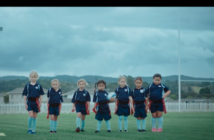
As Mobile overtakes desktop usage and statistics show 70 percent of mobile searches lead to online action within an hour, having an impactful mobile presence for your brand is imperative.
Smartphones and tablets are an intrinsic part of our daily lives, with studies showing the average smartphone user checks their phone up to 221 times a day. In an historic first, more New Zealanders now access the internet via mobile devices rather than desktop. By 2018 New Zealand will have 90 percent smartphone ownership (Frost & Sullivan). With a strong existing base of smartphone and tablet users (2.2 million and 1 million respectively), mobile is the fastest growing channel in New Zealand, up 119 percent year-on-year according to the International Bureau of Advertising (IAB)/PwC Q4 2014 Ad-spend report.
“In an historic first, more New Zealanders now access the internet via mobile devices rather than desktop”
Brands are increasingly shifting their marketing focus towards a more mobile first outlook, with greater importance been given to visual communications. However whilst New Zealand is showing phenomenal growth in mobile advertising many advertisers are yet to fully embrace this medium with mobile accounting for only a 2.4 percent market share of the total digital ad-spend.
Mobile allows brands to create immersive experiences to maximise social participation and emotionally engage consumers, as seen in Sky TV’s ‘Bring Down the King’ success culminating in the visual spectacle of the toppling of King Joffrey in Auckland. Scientific studies show the human brain processes images 60,000 times faster than text and visuals can increase brand engagement as much as 94 percent.
Visuals are now more important than ever and mobile devices are the main portal through which we experience them. At present, brands need a greater understanding on what works, because as we move to a smaller screen, the rules around visuals inevitably change. So, how do brands select the right visual content to make an impactful mobile experience?
- First person point of view (POV): Sales of first person POV visuals are increasing amongst mobile consumers. Their popularity is because they provide a raw, immersive and authentic feel leading to greater levels of engagement. The rise of wearable technology like GoPros bring us into an intimate view which create a sense of realism as well as adventure. NZTA’s Snapchat anti-drug-driving campaign is a powerful example of using point of view to innovatively connect with a hard-to-reach audience in tackling New Zealand’s drug-driving crisis.
- Super sensory: As we increasingly experience things through our mobile screens, we want to be presented with a more immersive experience that tantalises our senses. We want images that are more elicit, with HD driving this trend forward. Colourful visuals and those that showcase macro detailing which make the everyday seem enhanced are massively popular with Getty Images’ customers. It is for this reason that images of food do so well. Such visuals are inviting and arouse the viewers’ senses.
Smirnoff’s Kiwi #Instagram your Fridge campaign is a great example of mobile meeting a sensory experience with personalised video recommendations of customised cocktails based on sending in Instagram snaps of the available ingredients in your fridge.

- Wonderlust: In today’s technological world of hyper-connectivity, our sense of space and connection to geographical distances has undergone a revolution, thanks in no small part to mobile. Technology is leading to more solo travellers, as smartphone and the always ‘plugged in’ gives a sense of security in foreign lands.
“New Zealand sales of Wonderlust imagery that is expansive, full of epic landscapes and inspired meaningful travel have increased by 35 percent over the last five years”
New Zealand sales of Wonderlust imagery that is expansive, full of epic landscapes and inspired meaningful travel have increased by 35 percent over the last five years, influenced by the ever-growing rise of the travel ‘braggies’ to the continuous sharing of travel imagery on Instragram to Pinterest. Airbnb’s Instagram feed is a brilliant example of Wonderlust images being used to engage the follower. All the images it posts of vast beaches and stunning cliff sides are bookable.
Using strong imagery and video in mobile brand activities drives the connection to the audience. And creating or curating the right visual content can truly unlock the richness that mobile experience now offers, creating experiences that push the boundaries of mobile interaction, for a more immersive and sensory experience.
For more tips on using images to help your brand stand out, download the PDF: “12 tips to win with images”.
-
This story was produced as part of a content partnership with Getty Images.




















